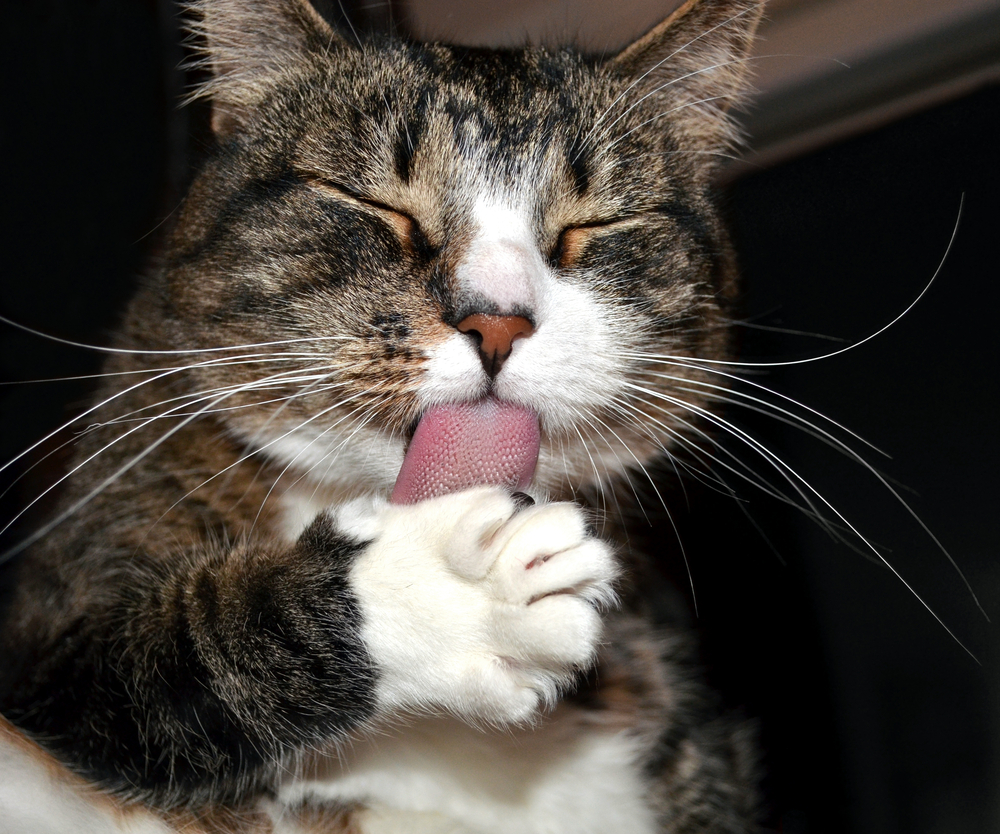
Researchers find that carnivores have retained bitter taste receptors—even those that have evolutionarily lost the ability to distinguish sweet flavours.
While us humans savor food on many levels, most people forget that a big part of our partialities come down to our individual taste buds. Though it’s long been thought that the ability to distinguish tastes evolved out of a need to find sweet, energy-filled meals and to avoid harmful bitter or sour toxins, new research out of the Monell Chemical Senses Center in Pennsylvania may change this thinking.
Following the previous theory, bitter detection abilities should increase the more plant stuffs a species consumes, but looking at domestic cats the Monell team found these modern-day carnivores have retained at least 12 bitter genes, 7 of which are still functional. Analyzing previous carnivore family data, they realized their cats weren’t an extraordinary case. Dogs have on average 15 bitter receptors, ferrets 14, polar bears 13, and giant pandas 16.
Molecular biologist and lead author of the new work out of Monell, MD/PhD Peihua Jiang, explains the idea for the study evolved out of work the team did in 2012, demonstrating many carnivores lacked sweet receptors altogether. It had already been shown that cats were in the same state of evolutionary loss in 2005.

‘If exclusively, or close to exclusively, meat-eating species had lost the ability to detect the sweet taste, it made sense they’d also lost the ability to detect bitter tastes,’ says Jiang. ‘Dolphins were shown to have lost this ability, so we wanted to know if this would hold in other mammals, and if not, why.’
Jiang says though their findings go directly against what previously held ideas surrounding the evolution of taste would predict, he wasn’t entirely surprised. He says there are a few theories floating around as to why carnivores would keep this trait in their genetic makeup; despite the fact that the ability to taste bitter and sweet isn’t overly applicable to a meat-eater from the offset.
‘Reptiles and other small prey can have poisonous toxins,’ says Jiang, ‘although recently a lot of evidence has also shown that these same receptors may serve protective functions in the respiratory system and gut.’
Next the team is interested in the individual response of cats to varying bitter tastes, and the deeper evolutionary details of how and why bitter genes were retained. An unexpected and more immediate outcome from the study, adds Jiang, is the potential to tweak cat feeds to better suit kitty palates. He adds that although dogs were shown to have a similar number of bitter receptors as their cat subjects, they don’t seem to hold the same fickle nature, eating pretty much anything you give them.
‘Yet with cats, now we know that if an amino acid or compound tastes bitter or unappealing to us, it may also taste very bad to them,’ says Jiang. ‘Using this information we can try to optimize cat food formulas.’
